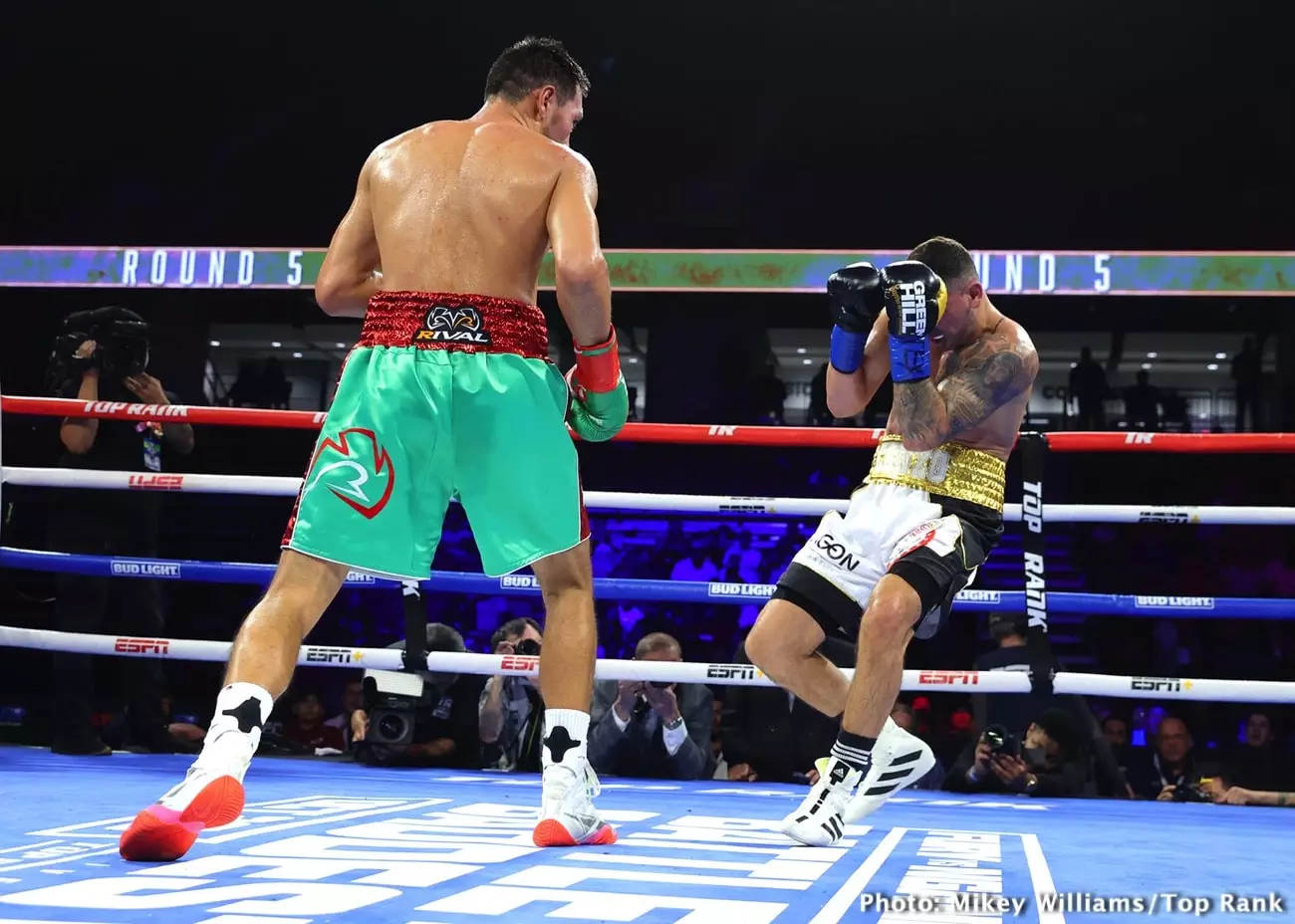Terence Crawford, a fighter known for his impressive skill set and strategic mind, is at a pivotal juncture in his career as he contemplates moving up in weight in pursuit of a high-stakes fight with Canelo Alvarez. The boxing community has been abuzz with speculation regarding Crawford’s next steps, particularly as he aims for a confrontation that could define his legacy. With the possibility of fighting Canelo in May 2025, the need to transition to the middleweight division becomes increasingly pressing.
Crawford’s ideal scenario would see him stepping into the ring at middleweight, where he would face Janibek Alimkhanuly for the IBF and WBO titles. This bout would not only elevate Crawford’s stature in the boxing hierarchy but also showcase his adaptability to higher weight classes. Currently, he is competing at junior middleweight (154 lbs), a division where he has recently gained prominence after his transition from welterweight, where he reigned as an undisputed champion. However, if he remains stagnant and does not take the calculated risk of facing formidable opponents at 160 lbs, he risks being overlooked by Alvarez, who could dismiss him as a viable competitor.
Remaining at 154 lbs poses significant risks for Crawford. The burgeoning pressure from fans and media to challenge other champions in the junior middleweight division could potentially lead him into dangerous matches against fighters like Bakhram Muratazaliev and Sebastian Fundora. A loss in this environment could severely diminish Crawford’s bargaining power and make it nearly impossible to secure a fight with Canelo in the future. Consequently, moving to middleweight not only demonstrates ambition but also positions him as a credible threat worthy of consideration.
The physical challenge of moving up a weight class is not trivial; Crawford stands at 5’8”, while Janibek is taller and potentially more powerful at 5’10”. This size differential raises concerns about whether Crawford can match Janibek’s power and technique effectively. Such transitions are fraught with challenges, and although Crawford has proven his mettle through various weight classes, the middleweight division offers a unique set of opponents whose size and strength could pose serious challenges.
One crucial element hindering negotiations with Canelo is his immense financial security, boasting a net worth exceeding $250 million. This wealth means he’s less likely to be swayed by potential purses offered for fights, particularly against smaller opposition who intend to adopt a movement strategy to avoid direct engagement. The interplay between wealth and matchmaking means that Crawford’s team must craft a compelling narrative that not only attracts Alvarez but also secures the respect and interest of boxing fans.
As Crawford contemplates his future, the delineation between ambition and prudence becomes increasingly nuanced. His decision to either stay within a familiar weight class or venture into the treacherous waters of middleweight could shape the trajectory of his career. Surveying the landscape, taking bold risks, and demonstrating readiness to engage top contenders may be the only benchmarks that elevate Crawford in Alvarez’s eyes and ensure that he doesn’t just fade into obscurity as a talented fighter who failed to seize opportunities. Time will tell if he advances into the middleweight arena or remains ensconced in his current division, wrestling with the realities of his ambitions and the constant specter of Canelo Alvarez.


Leave a Reply